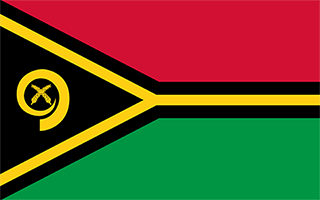Facts and Data
Webpages:
Official Unesco Page
Basis Data:
Unesco World heritage since: 2008
Size of heritage: 886 ha
- Buffer zone: 1,275 ha
Coordinates:
Longitude: 168,178°
Latitude: -16,372°
Summary
Chief Roi Mata’s Domain is the first site to be inscribed in Vanuatu. It consists of three early 17th century AD sites on the islands of Efate, Lelepa and Artok associated with the life and death of the last paramount chief, or Roi Mata, of what is now Central Vanuatu. The property includes Roi Mata’s residence, the site of his death and Roi Mata’s mass burial site. It is closely associated with the oral traditions surrounding the chief and the moral values he espoused. The site reflects the convergence between oral tradition and archaeology and bears witness to the persistence of Roi Mata’s social reforms and conflict resolution, still relevant to the people of the region.
Location on Map
Show bigger map on Openstreetmap
Chief Roi Mata’s Domain: A Cultural Treasure in Vanuatu
Located in the Pacific archipelago of Vanuatu, Chief Roi Mata’s Domain is a UNESCO World Heritage site that holds immense historical and cultural significance. Situated at coordinates S17 37 41.05 E168 10 39.79, this site encompasses three main areas: the burial grounds of Chief Roi Mata, his residence, and the site where his retainers were laid to rest.
Historical Significance
Chief Roi Mata, also known as Chief Roimata, was a paramount chief who ruled over what is now known as central Vanuatu in the 13th century. He was revered for his wisdom, leadership, and efforts to unite the region's warring tribes. His death marked the end of an era and the beginning of a new social order.
According to oral tradition, Chief Roi Mata was buried with his retainers, who willingly sacrificed themselves to accompany him into the afterlife. This act of loyalty and devotion solidified his legacy and established a unique cultural practice in Vanuatu.
The Burial Grounds
The burial grounds of Chief Roi Mata are a sacred site where his remains and those of his retainers were interred. The area is marked by stone slabs and is surrounded by lush vegetation, creating a serene and spiritual atmosphere. The site is a testament to the deep respect and veneration the people of Vanuatu held for their chief.
Chief Roi Mata’s Residence
The residence of Chief Roi Mata, known as Fels Cave, is an impressive natural cave system that served as his dwelling. The cave is adorned with ancient rock art, depicting scenes from daily life, rituals, and spiritual beliefs. These intricate drawings provide valuable insights into the cultural practices and beliefs of the time.
Inside the cave, visitors can explore the chambers and marvel at the stalactites and stalagmites that have formed over centuries. The cave's natural acoustics are said to have been utilized during ceremonies and gatherings, adding to its cultural significance.
The Retainers’ Site
The site where Chief Roi Mata's retainers were laid to rest is a poignant reminder of their sacrifice. The retainers willingly followed their chief into the afterlife, believing it was their duty and honor to accompany him. The area is marked by stone pillars, symbolizing the loyalty and devotion of these individuals.
Preservation Efforts
Recognizing the historical and cultural importance of Chief Roi Mata’s Domain, Vanuatu, with the support of UNESCO, has undertaken significant preservation efforts. These include ongoing archaeological research, conservation of the burial grounds and rock art, and the establishment of visitor facilities to ensure sustainable tourism.
Today, Chief Roi Mata’s Domain stands as a testament to the rich cultural heritage of Vanuatu and serves as a reminder of the region's ancient traditions and customs. It is a place where visitors can immerse themselves in the history and spirituality of the past, gaining a deeper understanding of the people who once inhabited these lands.
By preserving and promoting Chief Roi Mata’s Domain, Vanuatu not only safeguards its cultural heritage but also provides a platform for cultural exchange and appreciation. This UNESCO World Heritage site stands as a beacon of cultural pride and a symbol of the enduring legacy of Chief Roi Mata.
